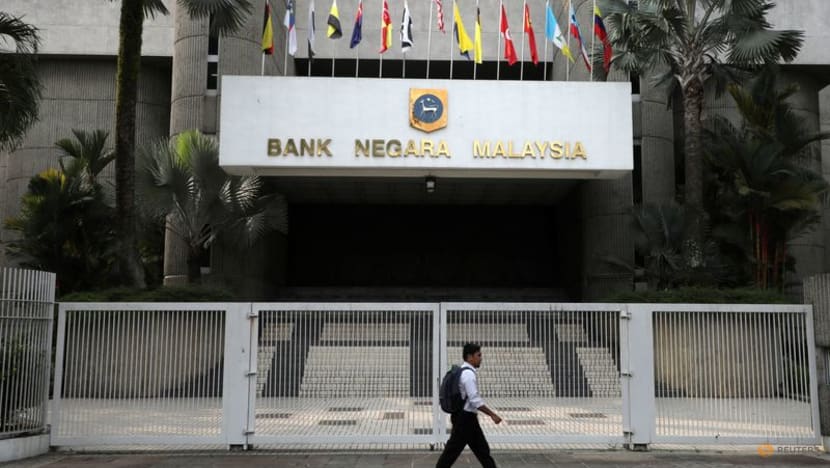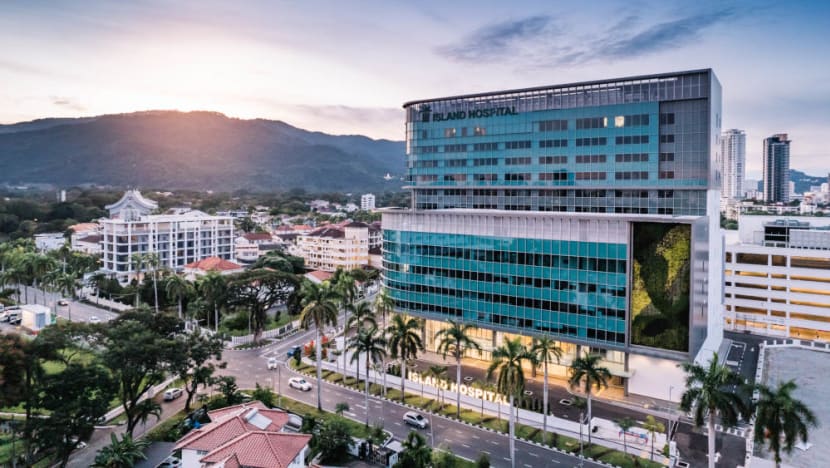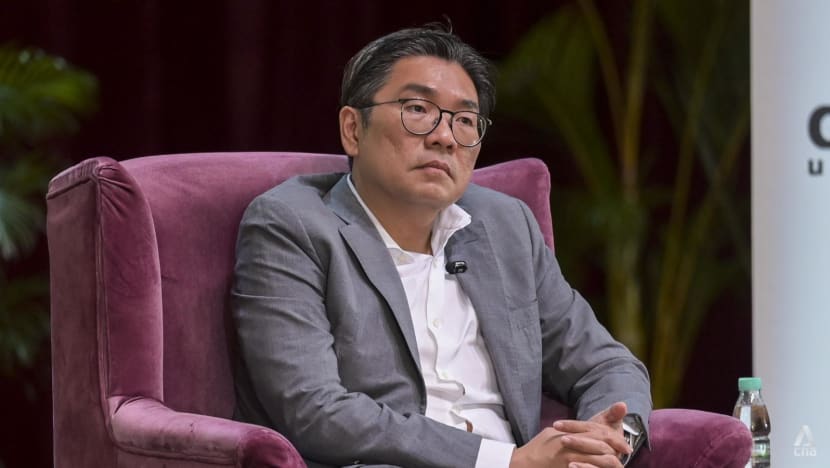‘So shocked by increase’: No easy solutions as Malaysians grapple with sharp spike in medical insurance costs
Higher medical insurance premiums have triggered outrage and debate about healthcare costs in Malaysia. The government has rolled out interim measures, but experts say broader reforms and greater transparency are needed.

Healthcare costs in Malaysia are rising due to an ageing population and advancements in medical technology, among other reasons. (Photo: iStock/fongfong2)

This audio is generated by an AI tool.
KUALA LUMPUR: When Eson Leo (not his real name) received a notice last August that his medical insurance premiums were going up by a staggering 147 per cent, he felt he had no choice but to drop the policy that he had bought about 15 years ago.
The 55-year-old, who is recovering from cancer, had quit his job a month earlier as he was afraid work stress could trigger a relapse.
The irony was that he was giving up his health insurance precisely when he needed it.
Leo had never made a single claim from his personal hospitalisation plan, having always relied on the insurance provided by his employer, including for the treatment of bladder cancer, which he was diagnosed with in 2019.
“I was so shocked by the increase. If it had increased by 50 per cent it would have still been acceptable,” said Leo, whose annual premiums would have increased from RM754 (US$168) to RM1,862. The reason cited by his insurer was medical inflation.
“I accept that shareholders also want their profit, but this increase was just too much,” he told CNA.
Like Leo, many Malaysians will feel the pinch of rising medical insurance premiums in the next few years as costs climb due to higher healthcare consumption by an ageing population and advancements in medical technology.
Last December, news that insurers were planning to raise premiums by 40 to 70 per cent this year sparked outrage, prompting Prime Minister Anwar Ibrahim to say the government would not tolerate “unjustified” increases.
The government made medical insurers spread out changes to premiums over a minimum of three years. The measure would be in place until end-2026, financial regulator Bank Negara Malaysia said.

Earlier this month, deputy finance minister Lim Hui Ying said medical insurers must cap annual premium increases at 10 per cent, ensuring the cumulative increase by end-2026 does not exceed 30 per cent.
Policyholders who surrendered their policies last year due to insurers’ repricing may request for a reinstatement of their policies based on adjusted premiums that align with the mandated measures, the regulator said.
These interim measures will “provide some temporary support to policyholders, but broader health reforms must be expedited with a commitment to achieve clear outcomes in the coming years”, said the central bank’s governor Abdul Rasheed Ghaffour in a statement on Dec 20 last year.
KICKING CAN DOWN THE ROAD?
Some experts say the measures to curb medical cost increases are akin to kicking the can down the road and do not address issues such as the shortage of healthcare workers and public healthcare capacity.
Malaysia offers subsidised public healthcare but does not have a public health insurance programme.
The Life Insurance Association of Malaysia said last year about 45 per cent of Malaysians have medical insurance. This allows them to seek treatment with private healthcare providers, which generally offer faster and better service but are more expensive than public hospitals.
The cap on premium increases is a postponement of the inevitable, given the rate of medical inflation in the country, said Azrul Mohd Khalib, chief executive of the Galen Centre for Health and Social Policy, a Kuala Lumpur-based research and advocacy organisation.
According to insurance services provider Aon, Malaysia’s medical inflation rate in 2023 and 2024 was 15 per cent, higher than the 2023 global average of 10.1 per cent.
“This is the equivalent of kicking the can down the road for three years. Will this temporary delay result in an inevitable drastic increase later as the cost of claims continues to skyrocket beyond reasonable estimates?” asked Azrul.
“Insurance and takaful products are businesses which need to respond to ground realities such as the escalating cost of hospital charges … we are postponing the inevitable,” he told CNA. Takaful products are Islamic insurance products.

The Life Insurance Association of Malaysia said the interim measures are unsustainable in the long term and come at a significant cost to insurers, which must bear the associated financial loss in the meantime.
Medical insurance premiums are revised periodically because of the rising cost of medical care and more policyholders going to hospitals, resulting in more claims, it posted in the frequently asked questions (FAQ) section of its website on Dec 20, the day of Bank Negara Malaysia’s announcement.
Insurance works on the concept of risk pooling, it said.
“If claims paid from the pool become higher than expected over time, the insurance company/takaful operator may have to revise the insurance charges/contributions to make sure that all customers in the group can continue to be covered in the long run,” it said.
In a statement in April last year, the association said total claims payouts surged by 14.9 per cent between 2022 and 2023. From RM13.4 billion in 2022, the figure rose to RM15.4 billion in 2023, driven by a 26.2 per cent increase in medical claims and a 41.4 per cent hike in disability payments.
The central bank also acknowledged premiums need to be periodically adjusted to ensure insurers can continue to fulfil policyholders’ claims.
Medical inflation is driven by factors such as advancements in medical technology and the increasing prevalence of non-communicable diseases, which have led to greater demand for healthcare services, it added.
“As a result, the claims paid out by insurers and takaful operators have grown faster than the premiums collected,” it said.
WHY COSTS ARE GOING UP
Bank Negara Malaysia governor Abdul Rasheed and analysts say broader healthcare reforms need to involve multiple parties including the health and finance ministries, private hospitals and insurers.
Medical inflation does not happen in a vacuum, said Azrul of Galen Centre.
According to him, a sizeable percentage of medical bills – about 70 per cent – continues to be unregulated.
He explained that a typical hospital bill consists of two parts: Fees of the doctor, and hospital charges.
Fees chargeable by doctors for consultations, procedures, examinations and some medical imaging procedures are regulated under existing legislation and regulations, he said.
Unregulated charges include room and board, operating theatre, nursing charges, bed linen and pillowcases, pharmaceuticals, laboratory imaging such as magnetic resonance imaging (MRI) and computed tomography (CT) scans, medical supplies and consumables, and the use of medical equipment and devices, he said.

Even the use of wheelchairs, pillowcases, glucometers, kidney dishes, electrocardiogram (ECG) monitors – whose costs would have been recovered many times over by healthcare institutions – are routinely charged as if they were brand new, he added.
“There are also reports of non-existent tests, visits by consultants which never happened, and a significant difference (in) charges between those with a medical card and those without,” he said.
“Insurers are forced to pay what has been charged, often leaving them transferring the consequences of over-consumption and overcharging to consumers, patients and policyholders,” said Azrul, whose own premiums went up by 125 per cent in 2023 and another 40 per cent last December.
Former Thomson Hospital Kota Damansara chief executive Nadiah Wan cited other factors that have driven up costs for private healthcare players.
In the wake of the COVID-19 pandemic, the supply of medical devices and drugs has been less stable and Malaysia has had to compete with other countries, she said at a forum titled “Healthcare for Whom?” on Jan 3.
Some medical training was also put on hold during the pandemic and this has contributed to a shortage of healthcare workers.
Some healthcare workers also left the country once the borders reopened, and private operators have increased wages to retain staff, she said.

“Healthcare is one of the very industries in Malaysia … (that are) protected from undermining wages from foreign labour. We are not allowed to hire foreign doctors or nurses. It’s a complete local workforce and we have to compete with many different markets,” she said.
Nadiah said there was a shortage of nurses in specialised areas such as dialysis, operating theatres and intensive care units (ICU), and that private hospitals set up their own academies to train staff.
“All of that has to be borne by the patient. You don’t see it in your bill,” she said, adding that salaries made up about 30 to 36 percent of operating expenditures, the largest component for most hospitals.
While people may focus on the billions of ringgit in profit made by private healthcare players, in percentage terms it amounts to about 11 per cent, she said.
“You could argue that it is a huge amount of money, but you must remember that investors are looking for their returns and this is entirely funded by shareholders without any public subsidies,” she said.
The Association of Private Hospitals Malaysia, which represents over 150 hospitals nationwide, said last year that the industry's profit-after-tax margins of 9 to 11 per cent are relatively modest compared to other sectors.

GREATER TRANSPARENCY NEEDED, CONSUMER GROUP SAYS
Efforts are underway to find solutions to the complex issue.
Since September last year, insurers have had to provide consumers with the option to purchase health insurance products with a co-payment feature.
Bank Negara Malaysia said that premiums for products with co-payment features are 19 per cent to 68 per cent lower than similar products without these features.
Analysts have called for greater transparency in how insurance premiums are calculated, as well as an independent body to regulate the private healthcare sector.
Azrul of Galen Centre proposed setting up an independent commission to review charges and fee increases in private healthcare.
The commission could have powers similar to Malaysia’s Competition Commission and take over regulation of health insurance and takaful products from Bank Negara Malaysia, he suggested.
Bayan Baru parliamentarian Sim Tze Tzin, who has been vocal about medical inflation, told CNA the Public Accounts Committee would be holding proceedings in parliament next month. Different stakeholders will be asked to share their side of the story.
“It is (an) entire ecosystem and on the receiving end are the patients and policyholders," he said. While insurers and private hospitals are profit-driven, their profits should not be “excessive”.
In 2023, insurers Prudential, Great Eastern, and AIA made net profits of RM963 million, RM1.123 billion, and RM1.41 billion respectively.
Asked about insurers’ profits, Life Insurance Association of Malaysia chief executive Mark O’Dell said the profits were from the companies’ other lines of business.
“A company very easily could be making 500 million ringgit a year ... But they're losing money on their medical business. And so by not raising the premium, you're asking the shareholders to pay or to subsidise from the profit of other lines of business,” he told CNA.
Sim said one aspect that can be investigated is the disparity in charges when patients claim using insurance and when they are paying out-of-pocket – something Bank Negara Malaysia noted in a briefing to parliamentarians last year.

“If we can investigate companies when the prices of eggs and chicken rise by a few cents, why can’t we investigate private hospitals and insurers?” he said.
He also questioned the need for insurers to offer products that allow for unlimited claims as this would encourage the “buffet syndrome”.
“The most worrying aspect is that when people drop their medical insurance policies, more people would go to the public hospitals which are already facing issues of overcrowding,” he said.
O’Dell agreed insurance plans allowing unlimited claims, with no deductibles and cost-sharing, give rise to the “buffet syndrome” among consumers and offer “the wrong incentive to hospitals to try to charge as much as they can justify”.
His association is working with the Ministry of Health to push for the adoption of a diagnosis-related group payment model, where a fixed price is agreed in advance between the healthcare provider and the one paying for the treatment – be it the insurer or the consumer.
“It should drive incentives to save costs rather than incentives to bill as much as possible. So if I'm getting, let's say RM30,000 for a knee replacement, I have to work within that budget,” said O’Dell, adding that the model is used in several places around the world.
“Right now, it's just the other way around. They're incentivised to charge as much as possible and to provide or prescribe as many drugs or procedures as possible as well,” he said.
“We're not looking for cost control or fixed pricing, but we just want the incentives to be aligned where the hospitals are on board with cost containment.”
Federation of Malaysian Consumers Associations chief executive T. Saravanan called for more transparency and accountability in how premiums are calculated.
“Consumers need clear and detailed explanations about the factors driving these increases, and stronger regulatory frameworks should be established to ensure fair pricing practices by insurers and healthcare providers,” he said.
“While insurers often cite rising medical inflation as the reason for increasing premiums, it is crucial to scrutinise whether these justifications are valid and proportionate,” he said.

“RELIEVED FOR NOW”, BUT WHAT ABOUT THE FUTURE?
Policyholders said they would try their best to pay the higher premiums and hold on to their insurance plans.
An accountant who only wanted to be known as Tang, 36, said her monthly premiums rose by 30 per cent this year from about RM200 to RM260.
“Since it is about health, I won't be stingy about it. I would just pay for it and cut down on other non-necessities in life,” she said.
“Medical insurance is helpful because the costs at a private hospital are just too high. I wouldn’t have been able to pay for private medical healthcare without insurance,” she said.
She had to seek treatment for a stomach issue in the past and underwent surgery at a private hospital.
Waiting times at public hospitals are too long, she said.
“I have experienced the waiting time at a semi-government hospital. The appointment to see the doctor was almost two months in advance. If you have cancer, you can’t wait for two months. Time is of the essence,” she said.
Some of the charges in her hospital bill were questionable, said Tang, but she did not think much about it as she did not have to pay anything out-of-pocket.
After the government announced interim measures to curb premium increases, cancer survivor Leo contacted his insurer and lodged a complaint with the regulator.
Last week, his insurer offered to reinstate his policy with a 10 per cent increase in premiums. He took it up but wonders about the future.
“I am relieved for now but if I do ever have to drop my policy later on because of a price hike I can’t afford, I will just go to public hospitals if the need ever arises,” he said.




















